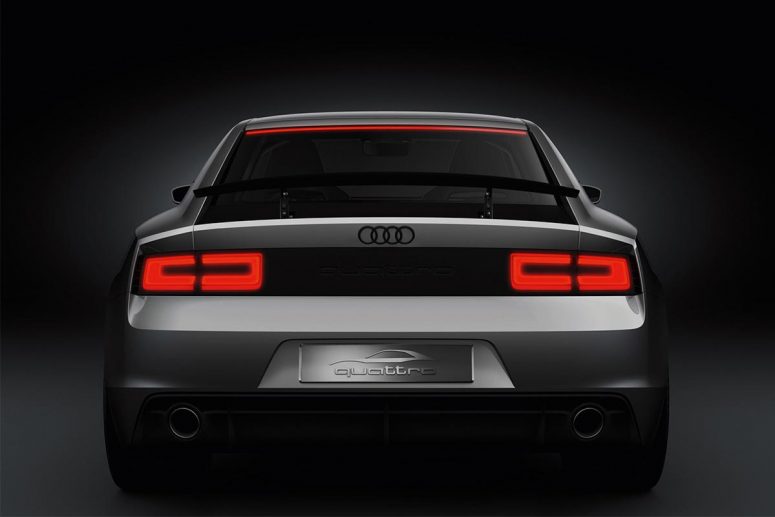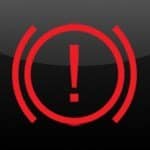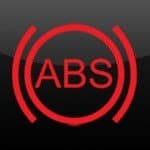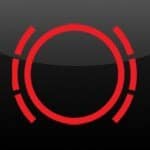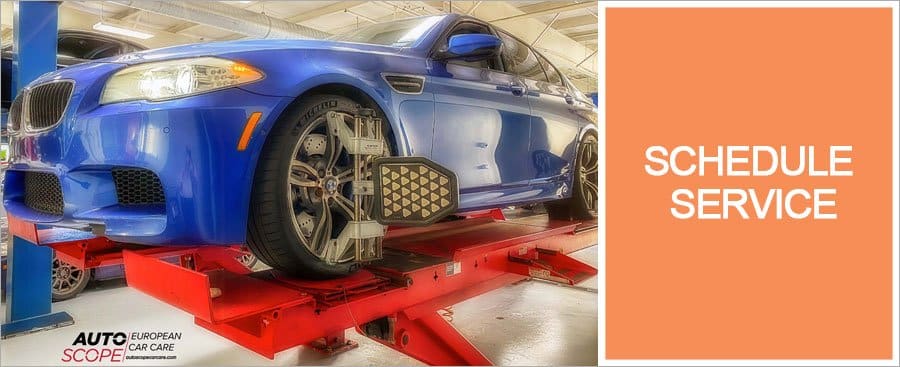All About That Brake Warning Light
Is there a brake warning light on in your car? It could mean a variety of different things and to know what it might be first depends on which brake warning light it is.
When you first start your car, all your instrument lights should flash on, briefly. This is a verification that the illuminated systems are being monitored and are now ready to be checked for proper operation. Once the system has verified a good operating condition, this will be indicated by toggling the corresponding light on the instrument cluster back off. Any lights that remain lit indicate a potential problem with the corresponding system(s). One of the systems your car designed to monitor and alert you to possible failures is the Brake System.
Identifying Which Brake Warning Light It Is
Your car’s instrument panel contains a lot of different icons. But, knowing which icon corresponds with which system can prove to be a bit of a challenge. To add to the confusion, there is not just one potential icon for issues with your brake system. Here are some of the possible icons you may see that pertain to your brake system:
Brake Hydraulic System Warning Light
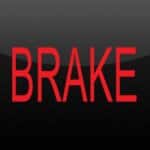
This light indicates an issue with the brake hydraulic system. If it toggles intermittently, or seemingly only during turning, it could be that your brake fluid is low. If it stays on, that would suggest a more persistent issue.
ABS Error/Warning Light
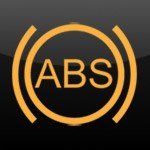
This light is to alert you to potential issues with either your ABS (Anti-Lock Braking System) or your normal service brake system. Additionally, you may see this light if the brake fluid levels are low for either the master cylinder reservoir or the ABS reservoir.
Brake Pad Warning Light
Some luxury car owners may see this light appear in their instrument cluster if it’s detected that the brake pads are worn-down or in need of service. The outer, dashed lines symbolize the actual pads. Worn-out pads may also squeak or pulse to let you know that it’s time to change them.
Parking Brake/Hand-Brake Warning Light
This symbol indicates that your parking/emergency/hand-brake is currently engaged. It’s a reminder that you should disengage it before attempting to drive. In some cars, an Electronic Parking Brake system is used. If it requires servicing, you will see this symbol with a wrench symbol underneath.
Press Brake Light
This light is not so much a “Warning” light, as an instructional light. It will typically display when you need to press on the brake before you can start the car (for push-button starters), or shift out of Park and into Drive/Reverse (for automatic transmissions). If it comes on while driving, the light has most likely malfunctioned.
Why am I Getting a Brake Warning Light?
There are as many (if not more) reasons, as there are different Brake Warning Lights. Below, we’ll break-down some of the more common causes of these lights.
Parking/Emergency/Hand-Brake is Engaged
One of (if not the) most common reasons your dashboard has Brake Warning Light on is because the parking brake has not been fully disengaged before attempts to drive the car have been made. Beginning to drive the car before fully releasing this brake can have a multitude of effects, depending on how engaged it is – from premature wearing on the brake shoes to damaging the wheel bearing to even catastrophic brake system failure.
Another factor in play here is the type of drive system in your vehicle.
Front-wheel drive vehicles run less of a risk for damage, as there’s a really good chance the car won’t even operate while the parking brake is engaged. And, even if the car does move with the parking brake on, the tires will drag – which will be a very clear indicator that something’s amiss.
Rear-wheel drive vehicles, however, present a higher risk for problems. Because the engine can (and will) overpower the brakes, it’s possible for the car to be driven without any indication that something’s wrong until it’s too late. Some cars will add an audible alert, in the event you don’t see the symbol on your dash. Additionally, some drivers have reported a strange smell after inadvertently driving while the parking brake was still engaged.
The important thing is, if you’re seeing this light, it’s a very easy fix – simply disengage the parking brake. In the event that complete release of the brake doesn’t cause the light to turn off, or if you think you may have driven too extensively on an engaged parking brake, be sure to get your car into a certified service repair center to get it checked out. After all, they don’t call it the “emergency brake” for nothing.
Brake Fluid Levels are Low
Another common cause for a Brake Warning Light comes from the sensor inside the brake master cylinder when it detects insufficient levels of brake fluid. This is important, as brake fluid is vital to your brake system’s operation, and – if levels fall too low – can cause your brakes to fail completely.
Your car’s brake fluid is divided into two sections, each controlling two wheels. This is to provide redundancy, and prevent against catastrophic failure should one of the two sections be compromised. In the event that something does happen to one of the sections, the other section will still be able to operate your brake system. However, if both sections are rendered inoperable, the ability to brake normally will be lost. So, it’s important that you get your car into a certified service repair center as soon as you can, if you’re seeing this light.
If you find yourself in the position where both sections have failed, while you’re driving – do not panic. It is a perfectly natural response when you go to press on the brake pedal and discover that it’s not responding, but it’s important that you remain calm, as panic can (and will) distort your thinking, resulting in irrational – and oftentimes, erratic – thoughts and behavior. Instead, simply breathe, keep a level head, and pull your vehicle off onto the shoulder/nearest parking lot/side street while slowly bringing your car to a stop with the emergency brake. Safety is paramount.
ABS Malfunction
Most cars these days use the Anti-Lock Braking System (or ABS). As with anything else, there can sometimes be complications with this system. In the event your car experiences such an issue, you’ll see one of the ABS Warning/Error Lights shown above (or something similar, with the letters ‘ABS’).
This light could indicate one or several different potential errors with your ABS, and uses an error-code system for identification. This will require hooking your car’s computer system up to a specially-designed diagnostic scanning tool, which will retrieve the codes from your ABS monitoring system and determine the corresponding issues.
Fortunately, an ABS Malfunction will not cause your brakes to fail, and you will still be able to drive the vehicle. You just won’t have the anti-lock feature that ABS provides. It is highly recommended in these instances, however, that you get your car into a certified service repair center at your earliest convenience – as the ABS does provide an added level of safety, by preventing your brakes from locking up, which could cause skidding in the event that you have to stop short.
Burnt Out Brake/Tail Light(s)
This is a fairly common occurrence, for drivers with cars that have this light. While this isn’t going to impact your car’s performance or lead to any further damage directly, it is a helpful notification. Since we are rarely in a position to see our own brake and taillights, it’s not uncommon for a bulb to burn out without our noticing it. And, if multiple bulbs burn out before we’re made aware of it – our ability to indicate to other drivers that we’re slowing/stopping can be greatly affected, increasing the likelihood of an accident.
Also, in some states (Texas being one of them), you can get pulled over and given a citation for a brake light being out. It can even cause you to fail your state Inspection.
If you’re seeing this warning light, it’s a good idea to just go ahead and get your bulbs replaced. It’s a simple fix that could prevent some rather undesirable results.
Worn-Out Brake Pads
In some of the higher-end vehicles, there is a sensor that specifically monitors the brake pads. When it detects that the pads have reached a certain level of wear, it will toggle this warning light on the dashboard, indicating that it’s time to replace your brake pads.
If you’re seeing this light in your car, do not ignore it. Worn brake pads can lead to disaster if not replaced, as they will no longer be able to effectively stop your car. Additionally, if you let your pads wear down too much, they could cause damage to your rotors, significantly increasing the cost for repairs.
A few other signs that it may be time for new pads include:
- A high-pitched squeaking/squealing sound when applying pressure to the brake pedal
- Loss of grip when braking
- It takes longer to bring your car to a stop than usual
- Abnormal “softness” in the brake pedal
- A shuddering sensation in your steering wheel while braking
- Brake System Warning Light flashing
If you experience any of these symptoms, and/or get the Brake Pad Warning Light on your dashboard, it’s important to get your car in to have the brakes checked out/replaced by a reputable certified service repair tech as soon as possible, to prevent any further complications.
Does your European car have a brake warning light on? For info regarding that or any other brake service for your European car, give Autoscope European Car Repair a call or schedule an appointment online today at any one of our three convenient DFW locations.

